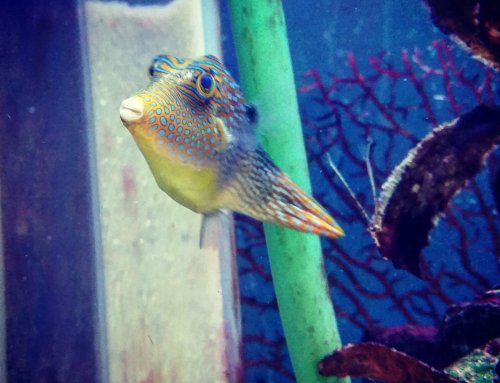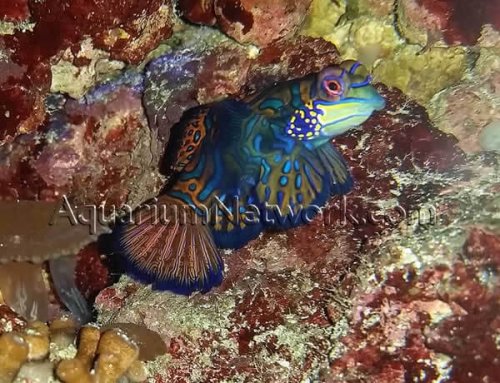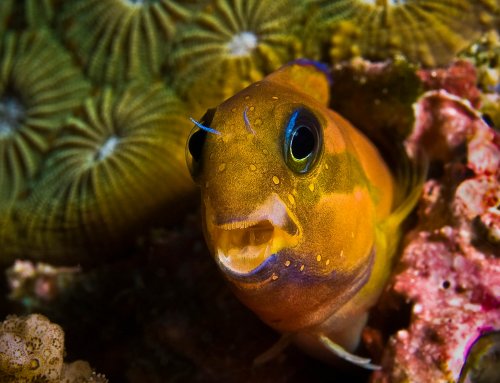Are you captivated with the vivid colors of the Cuban Hogfish? Or maybe their beautiful fancy tail got you interested in fishkeeping. If you are a total beginner and just setting up a brand new tank, you might be wondering if these active swimmers are good for you. Great news: This is an ideal fish for the novice with a large tank.
The Cuban hogfish (Bodianus pulchellus) is native to the Caribbean sea. They are mainly found in tropical waters of the Western Atlantic region, South Carolina to Venezuela. They do not swim at any specific depth level which makes them difficult to catch. They are popular in the hobby due to their bright colors and relatively small size. A red-orange sheen overlays their head and body with some yellow in the tail and white streak under the mouth running across the pectoral fins. The brightness of this fish varies depending on water conditions and feeding habits. As juveniles, they are almost entirely yellow. They are “cleaners” and will pick external parasites off other fish species. They are also called spotfin hogfish because of the presence of a black spot below the forward dorsal fin of some fish. It can grow to about 11” in maximum length but the average size is 8”.
Did you know that Cuban hogfish are hermaphrodites? Surprisingly, they can change sex from female to male. This is the reason why it can be hard to distinguish between the two sexes. It is also difficult to make them breed in captivity. They are known to spawn in groups. In the wild, this species may hybridize with the larger Spanish hogfish, Bodianus rufus.
Observing the Cuban Hogfish
As with most hogfish, they are semi-aggressive in nature. They are docile and generally safe with almost every tankmate and invertebrates, except crustaceans as they are part of its natural diet. It is not a good idea to keep one male Cuban hogfish in company of another male. This results in a fight. They are compatible with dwarf and angelfish, anglers, frogfish, anthias, boxfish, butterflyfish, clownfish, damselfish, filefish, goatfish, hawkfish, parrotfish, puffers, squirrelfish, and tangs. What a feast to the eyes!
Diet & Feeding Techniques
Feeding Cuban hogfish is easy. They are carnivorous and should be fed with meaty foods, flake, frozen or freeze-dried foods. Caution is necessary in a reef tank, not to corals but to your cleanup crew because mature adults prey on snails, worms, mussels, and small fish. Shrimps and squids are also part of their diet. On feeding time, they may scare off smaller fish due to its voracious appetite.
Tank & Water Conditions
Since Cuban hogfish need a lot of room to swim and grow fairly quick, another trick to keep them happy is to place them in a large tank of at least 100 gallons. Ideally, tank conditions should be kept in temperatures between 72 and 78 degree Fahrenheit. The Ph balance of the water should also be maintained between 8.1 and 8.4 as they prefer alkaline content of the water to be high. The specific gravity should be maintained between 1.020-1.025. The tank must be decorated with artificial caves and rocks as these structures mimic their artificial coral reef environment. Hogfish can jump, so a lid or canopy is recommended.
The Cuban hogfish is a charm to any saltwater tank. If you have a large tank that is missing a colorful hue, then this might be what you’re looking for. We’ve just added Cuban hogfish in our fishroom and it really does have that something special to the aquarium.






Leave A Comment